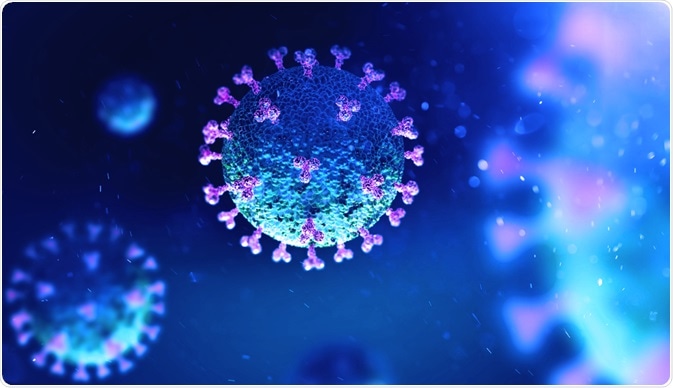Herd immunity occurs when the majority of a population develops immunity against a contagious disease either through vaccination or due to a previous infection. This significantly reduces the likeliness of disease transmission from one person to another.

Image Credit: Lightspring/Shutterstock.com
What is herd immunity?
The development of herd immunity is an important way of gaining protection from contagious diseases such as smallpox, measles, mumps, polio, and COVID-19. Once achieved, herd immunity can provide some level of protection even to non-vaccinated individuals primarily because of the significantly reduced chance of disease spreading within the community.
In other words, for a population where a considerable number of people are already immune, herd immunity can protect the vulnerable portion of the population by reducing the chance of physical contact between an infected person and a vulnerable person.
To develop herd immunity against a highly contagious disease, about 70% to 90% of a population needs to be immune. This is believed to be the threshold for herd immunity. However, depending on the severity of infection, the herd immunity threshold can be as low as 40%.
How is herd immunity developed?
There are two ways to develop herd immunity: vaccination and previous infection.
Vaccination
Vaccination is the best way to develop herd immunity, as it can break the chain of infection. The level of herd immunity-based indirect protection is directly proportional to the number of vaccinated people within a community. In this way, it is possible to protect individuals who cannot be vaccinated, such as newborns, pregnant women, or immunocompromised patients (organ transplant patients; cancer patients receiving chemotherapy).
However, the indirect protection achieved through vaccine-based herd immunity can vary from one geographic location to another as it depends on geographically variable factors such as vaccine efficacy and coverage.
There are some disadvantages to developing vaccine-based herd immunity. For some vaccines, the efficacy reduces over time, and people who fail to receive the booster dose may lose the benefits. Moreover, people who do not complete the entire course of a vaccine may remain unprotected against vaccine-preventable diseases.
In a population with a lower vaccination rate, outbreaks of vaccine-preventable diseases may occur. One of the main reasons for such outbreaks is the lack of herd immunity. Moreover, people who do not believe in vaccination frequently live in the same community, leading to a drastic reduction in the percentage of vaccinated people in that community.
If the percentage drops below the threshold of herd immunity, exposure to infectious disease can lead to the rapid spreading of the disease within the community.
Previous infection
Another way of developing herd immunity is having a previous infection. In this case, herd immunity can be achieved when a large portion of a population has been infected with and recovered from a contagious disease and subsequently has developed antibodies against the disease-causing pathogen.
For instance, people who recovered from the deadly influenza pandemic in 1918 eventually became resistant to the H1N1 influenza A virus.
However, the development of herd immunity through community infection can be risky if the antibodies developed against a pathogen fail to provide long-term protection. For example, studies have found that people previously infected with common coronaviruses can be re-infected with the same viruses after months or years. In the case of COVID-19, recent studies suggest previous infection with a novel coronavirus protects a person from future infection for only a limited time of around five months.

Image Credit: Andrii Vodolazhskyi/Shutterstock.com
Is it good to achieve herd immunity for a disease without a vaccine?
To achieve herd immunity against a disease, a large portion of a population needs to be infected with and recovered from that particular disease, which can be a serious problem in the case of highly contagious and deadly diseases that do not have any available vaccine.
For example, studies have suggested that to have developed herd immunity and stopped the pandemic without vaccines, about 70% of the population in the United States would need to have been recovered from COVID-19. However, if the number of infected people increases rapidly within a short period, healthcare systems can be exhausted, and the mortality rate can increase drastically. This happened in many countries.
Moreover, the infection fatality rate is another important factor that goes alongside the herd immunity threshold in determining the risk of overall mortality for a disease. The infection fatality rate is an estimate of the percentage of deaths caused by a particular disease among all infected individuals, including those who are asymptomatic or remain undiagnosed.
Early studies evaluating the significance of herd immunity for COVID-19 suggested that with an estimated herd immunity threshold of 67% and an infection mortality rate of 0.6%, the total number of expected deaths could exceed 30 million worldwide.
One study showed that after an estimated attack rate of 66% in June 2020 in Manaus, Brazil, many thought herd immunity had been achieved. However, this rose to 76% in October 2020. This study confirmed that COVID-19, if poorly controlled and left to infect a significant proportion of the population, would lead to very high mortality.
Thus, for a disease like COVID-19, developing herd immunity without having a vaccine would be devastating, particularly for countries with limited healthcare setups and a higher proportion of vulnerable populations.
Vaccination is the better option for reducing fatality and the devastating impacts of COVID-19. The World Health Organization, as well as many other medical organizations, have made a point of declaring that herd immunity against COVID-19 should be achieved by vaccination and not by exposing people to severe acute respiratory syndrome coronavirus 2 (SARS-CoV-2).
Several COVID-19 vaccinations are now available, in development, and being deployed globally. It is essential that herd immunity is achieved across the globe by successful international vaccination.
Herd Immunity and Coronavirus: Can It Be Achieved?
References
Further Reading
Last Updated: Feb 29, 2024